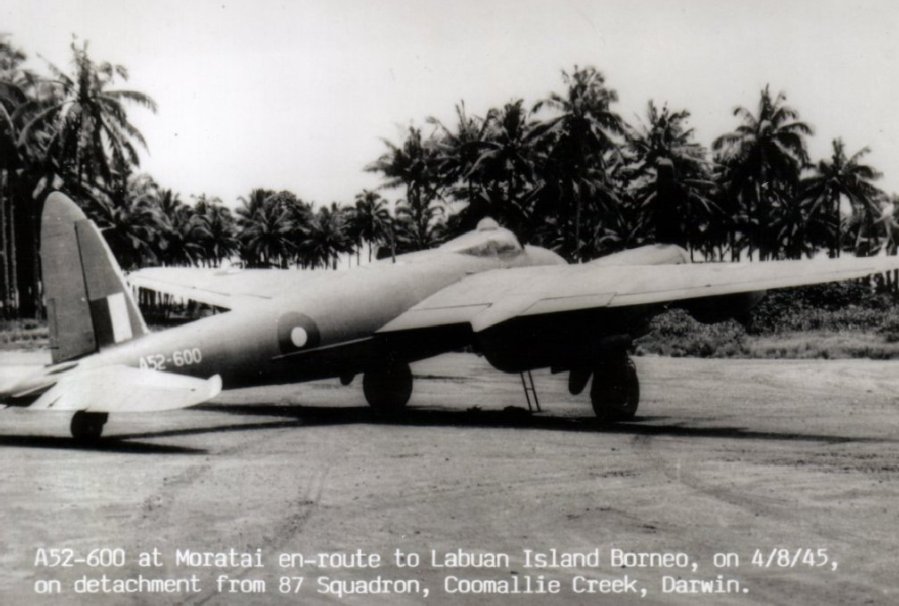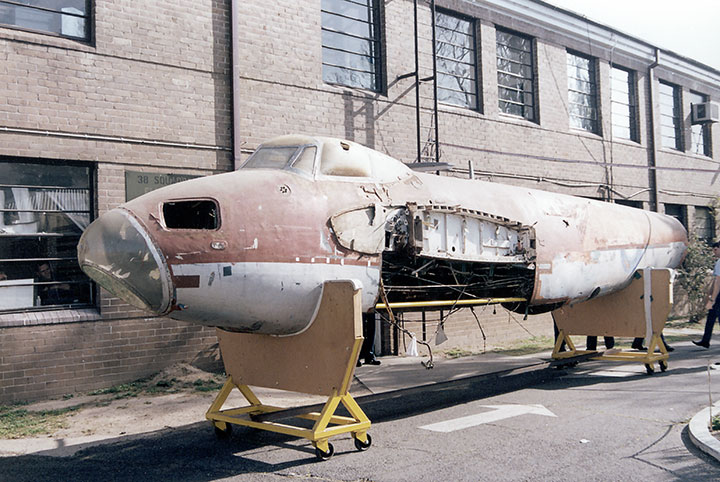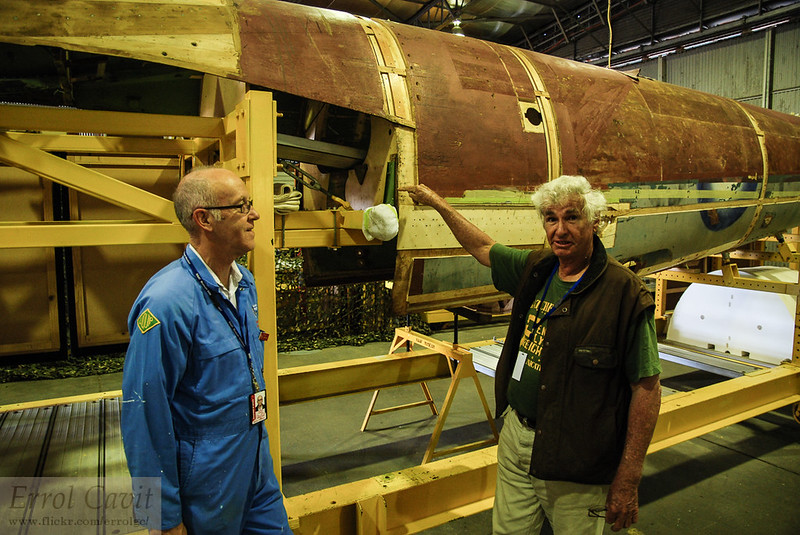The RAAF Museum Point Cook long-term restoration of a de Havilland DH.98 Mosquito PR Mk.XVI (A52-600) photo reconnaissance aircraft continues on as time and labour permits. Delivered to the RAAF in November 1944 this aircraft was one of 23 of this variant operated by the RAAF (A52-600 to 622). This is the only surviving PR Mk.XVI in the world and the only remaining RAAF Mosquito of any mark with a combat record – it flew with No. 87 (Photo Reconnaissance) Squadron out of Coomalie Creek in the Northern Territory conducting 21 photo reconnaissance missions over Japanese held Pacific theatre territory in 1945.

Geoff Kingman-Sugars)
Post war A52-600 was used for mapping surveys of Australia over 11 missions until declared unserviceable by the RAAF with just 321.8 hours of total flying time on the aircraft. In 1947 the Mosquito then became a ground instructional airframe (Instructional Airframe No.4) at the Air and Ground Radio School (AGRS) in Ballarat, Victoria until put up for disposal sale in 1954.
Given the Mosquito was predominately constructed from wood, hence its nickname “Wooden Wonder“, the civilian orchardist buyer from Mildura cut its wings and rear fuselage off with a chainsaw to transport it! He intended to put the parts left to use on his property but eventually it became a playhouse for his kids before sold in 1966 to the Warbirds Aviation Museum in Mildura. Some restoration work had been completed in Mildura but it was too big a job and it had been in storage for a long time before it was sold in 1983 to a group who somewhat ambitiously for the time wanted to restore it to flight. This didn’t happen and the RAAF reacquired it via an exchange in 1987 for restoration to a museum display. A52-600 then briefly went into storage at RAAF Laverton (where I first saw it in pieces in a hangar during an air show in 1988), then it was sent to RAAF Richmond in NSW for restoration, where some progress was made before it was sent back to RAAF Point Cook in Victoria for them to complete the job.

At the RAAF Museum Point Cook with parts missing, deteriorated and detached from the Mosquito they have had to recreate the severed rear fuselage section and rebuild the internal bulkheads. There has been a lot of repair done to the damage to the fuselage outer skin and they have had to reglue the internal skin and balsa core. Restoration work has also been done on the tailplane, fin and propellers and continues on internal fittings, instrument panels, the tailwheel and undercarriage assemblies.
Almost 20 years since I first saw Mosquito A52-600 at RAAF Laverton, work progresses but it is expected to be at least a 10 year restoration project. You can check out this project in the RAAF Museum Restoration Hangar where they have a viewing platform that overlooks the restoration workshop. It is quite interesting seeing the complex woodwork and effort that goes into restoring a Mosquito! They also have on display some parts and equipment from Mosquito A52-600.






During my recent visit to the museum, in addition to the Mosquito, there was also the flyable CAC CA-18 Mk.23 Mustang (A68-170) within the hangar, a newly acquired Royal Aircraft Factory R.E.8 (A4267) airworthy replica and ongoing restoration work for static display of a de Havilland DH-60M Gypsy Moth (c/n 783 ex VH-UQV) trainer used by the RAAF. For the latter the visible items that I could see included the fuselage frame and wooden wing frames.

The CAC Mustang is a 1950 Commonwealth Aircraft Corporation licence-built P-51D Mustang which flew with various RAAF units in Australia throughout the 1950’s. By 1964 it was on display in Toowoomba, QLD before being transferred to the RAAF Museum where a 10 year restoration back to air worthiness was completed and it received the civil registration VH-SVU in 1995. It was engineless as the Packard Merlin engine has been sent away for overhaul in the UK. In the meantime other minor repair work is being conducted on the airframe which is painted up as a North American P-51D Mustang (A68-750) operated by No. 77 Squadron RAAF in Japan from 1945 to 1948 as part of the Commonwealth Occupation Force. The real A68-750 is today in the United States.



The Royal Aircraft Factory RE.8 (A4267) airworthy replica was built by The Vintage Aviator in New Zealand. During World War One the Australian Flying Corps operated 135 R.E.8 two-seat reconnaissance and bomber aircraft in operational and training roles in the Middle East with No. 1 Squadron (11 aircraft) and on the Western Front of Europe with No. 3 Squadron (104 aircraft) and No. 7 (Training) Squadron in the UK (20 aircraft). I look forward to seeing the R.E.8 fly someday and also for the CAC Mustang to return to the skies!
References:

Great coverage as always.


I managed to get next to the Mossie during the 2014 Pt Cook airshow.
And I saw the R.E.8 at Wings Over Wairarapa 2015 (markings since changed)
LikeLiked by 1 person
Thanks Errol, you got up very close and got to see the Merlins too! I saw the same R.E.8 in the hangar at Wings Over Wairarapa 2013 – would have been nice to see it fly too! https://acesflyinghigh.wordpress.com/2013/02/20/knights-of-the-sky-wings-over-wairarapa-2013/
LikeLike
It’s always a pleasure seeing that one of the old bird is getting their wings back!! Thanks, Deano!!
LikeLiked by 1 person
The legendary Mossie is always good to see 🙂
LikeLiked by 1 person
My pleasure!
LikeLike
[…] you want to read more about the de Havilland DH.98 Mosquito restoration, take a look at Aces Flying High, Deano is a mine of […]
LikeLiked by 1 person